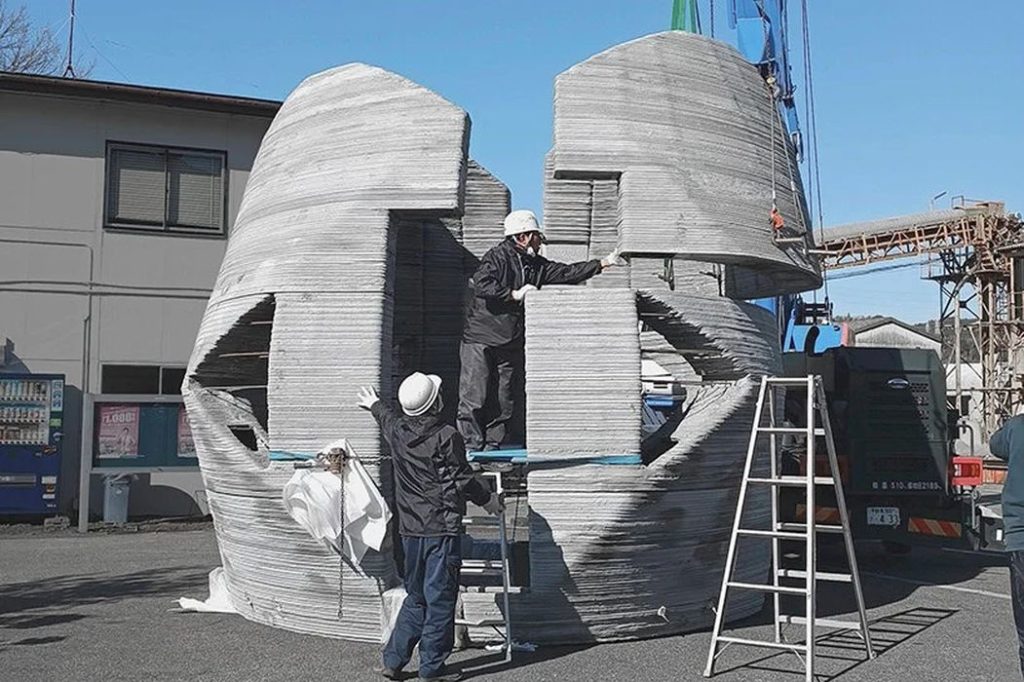
I’m beginning to think it is too easy to start 3D printing in concrete.
Another week, another “company 3D printed a house in 24 hours” story has emerged, this time on DesignBoom. They reported on a Japanese company, serendix, that had apparently 3D printed a “house” in less than a day sometime late last year.
This is simply not true.
Yes, there are plenty of images of the work taking place, as you can see in this post. However, IT IS NOT A HOUSE. It is a concrete structure. There is no plumbing, windows, HVAC, electrical, windows, flooring, finishing or anything else that would enable this project to say that this is a “house”. While it is above ground, it is functionally similar to a foundation or basement. No one would want to live in it.

Take another look at these images. Would you move into this concrete sphere? I didn’t think so. This appears to be a publicity stunt designed to attract attention.
The company indicated that it was inexpensive to produce, apparently only about US$25K. That’s a low price for a house, but that price does not include the majority of the cost for manual labor to finish all other features of the home.

I’m now wondering if it is becoming too straightforward to build a concrete 3D printer. These are basically a standard concrete pump matched with a motion system that’s either a cartesian gantry or a robotic system. Both of those motion systems have plenty of readily available software to drive them if you wanted to make a construction 3D printer.
That appears to be what’s happened: entrepreneurs are now realizing the tremendous opportunity created by this technology and have been rapidly throwing together construction 3D printing systems.
In startup-speak, this could be a line of business where the “barrier to entry” is rather low.
But it’s really too late. There are a few established players in the space, most notably COBOD and ICON (which recently has raised almost US$500M) that have performed multiple successful projects and are set to do many more.
That may not deter some entrepreneurs, who will likely start appearing more frequently in hopes of riding the construction 3D printing wave that’s about to begin.
If the technological barrier to entry is low, then business success will depend on other factors, such as marketing, networking, deal-making, service, scalability and other aspects.
Each of those factors are driven by cash, and that’s something the new entrants don’t have. Meanwhile, the established players seem to have plenty of investment to compete on these levels.

What will happen next? I suspect we’ll see a series of new construction 3D printer startups rapidly emerge, and almost all of them will fall away unless they offer something radically new in the technology, or have some way to control activity in a specific region. Meanwhile, the bigger players will simply get bigger.
And the rest of us will eventually move into actual 3D printed homes.
Via DesignBoom and Serendix

